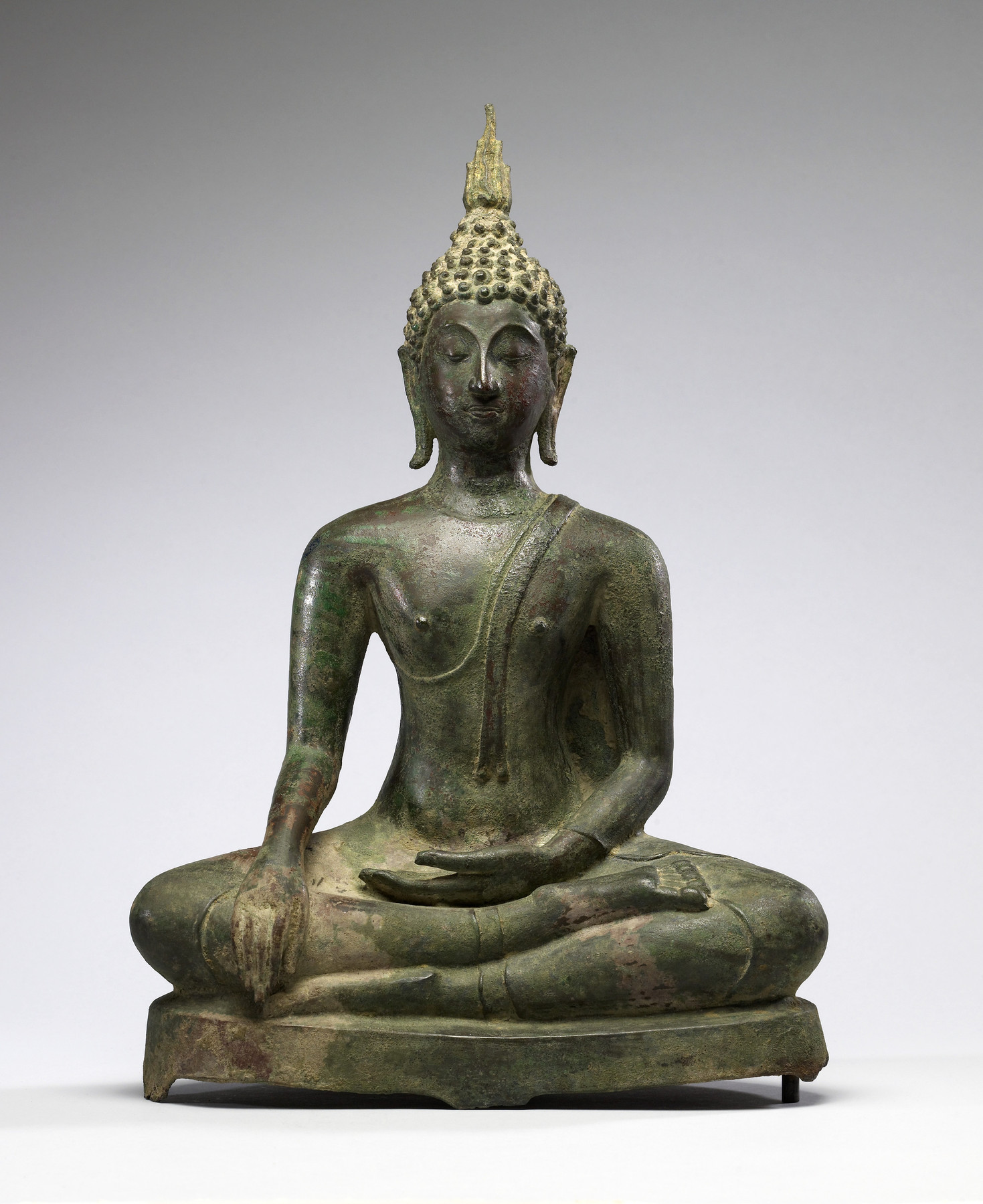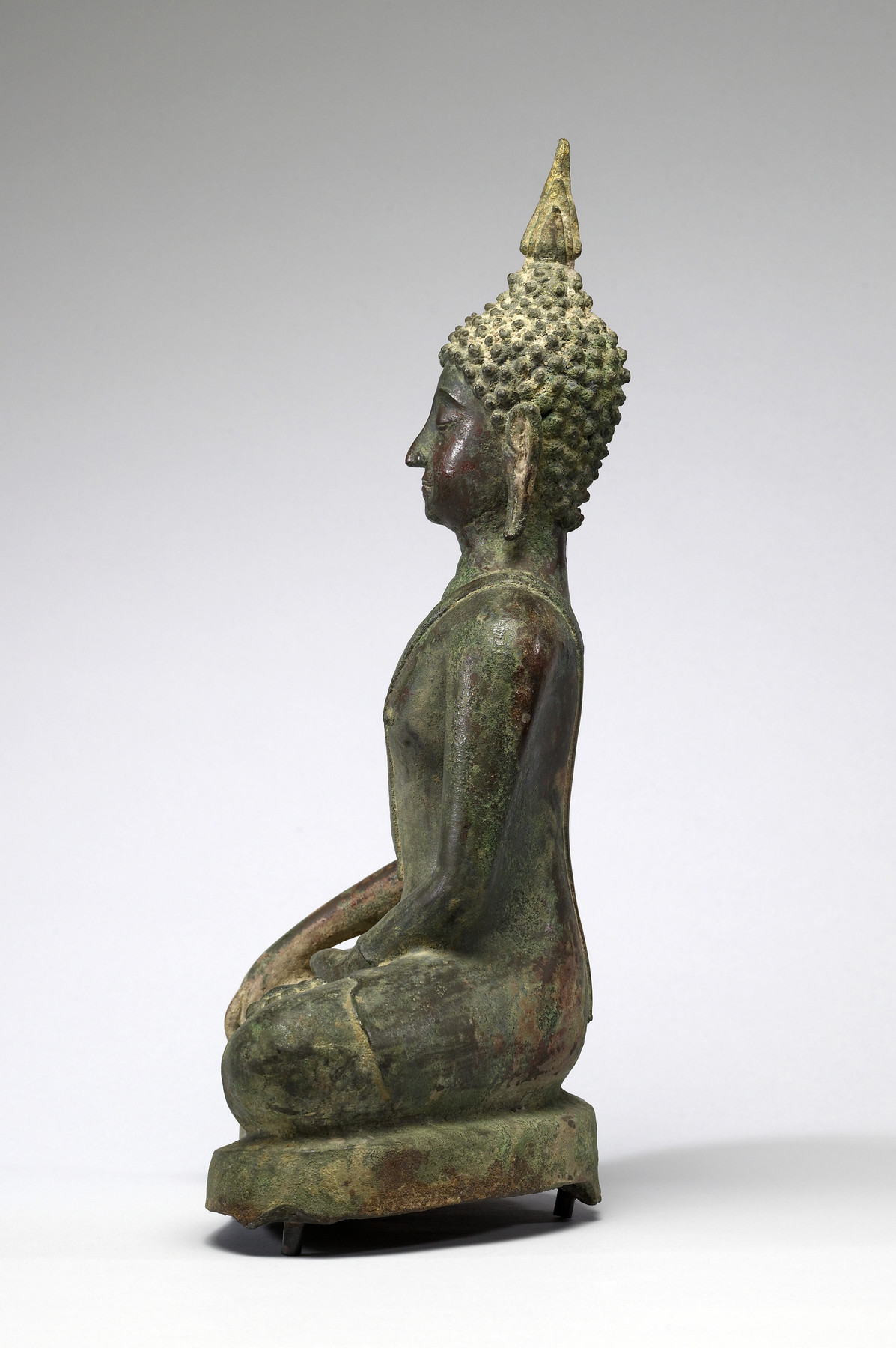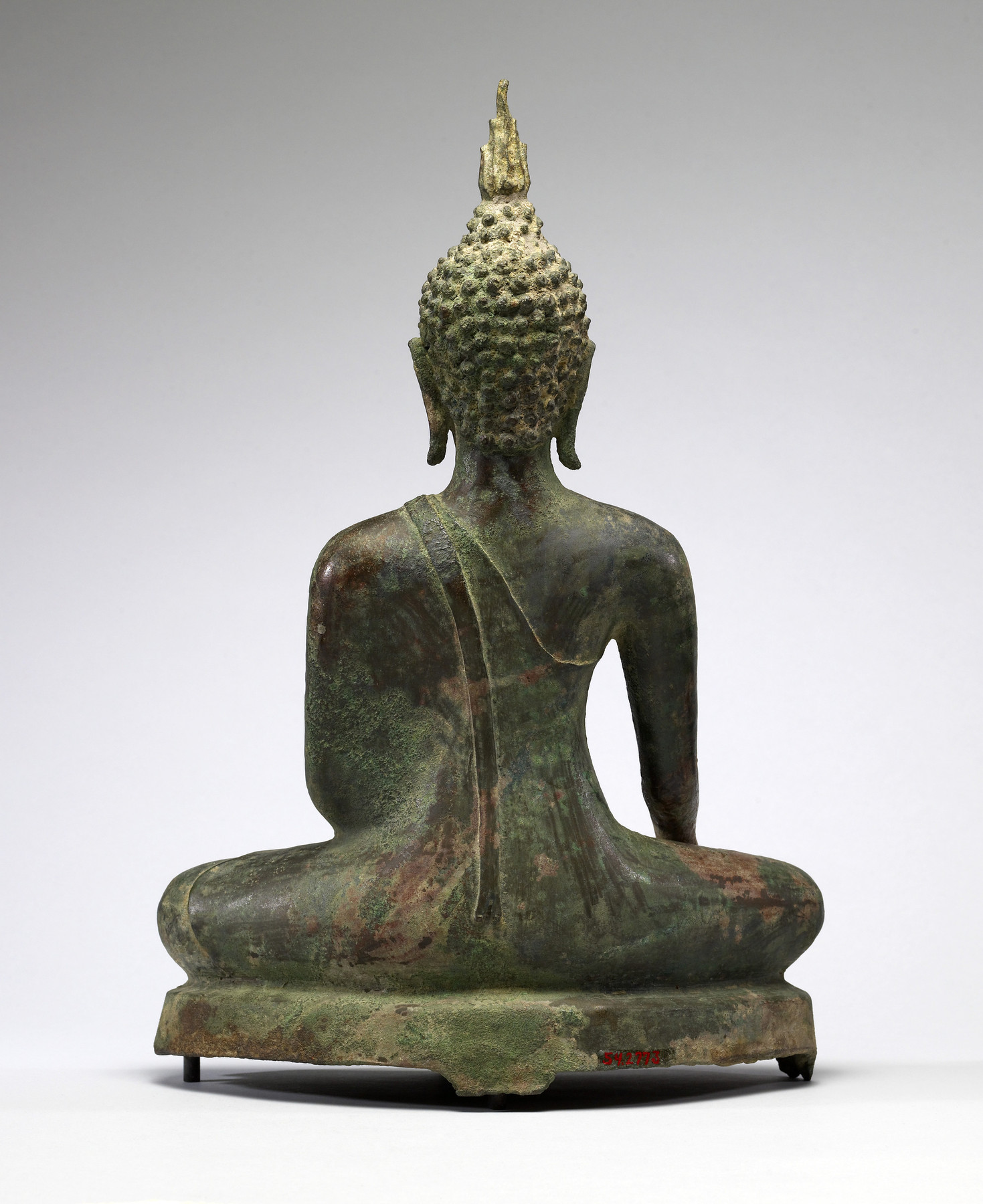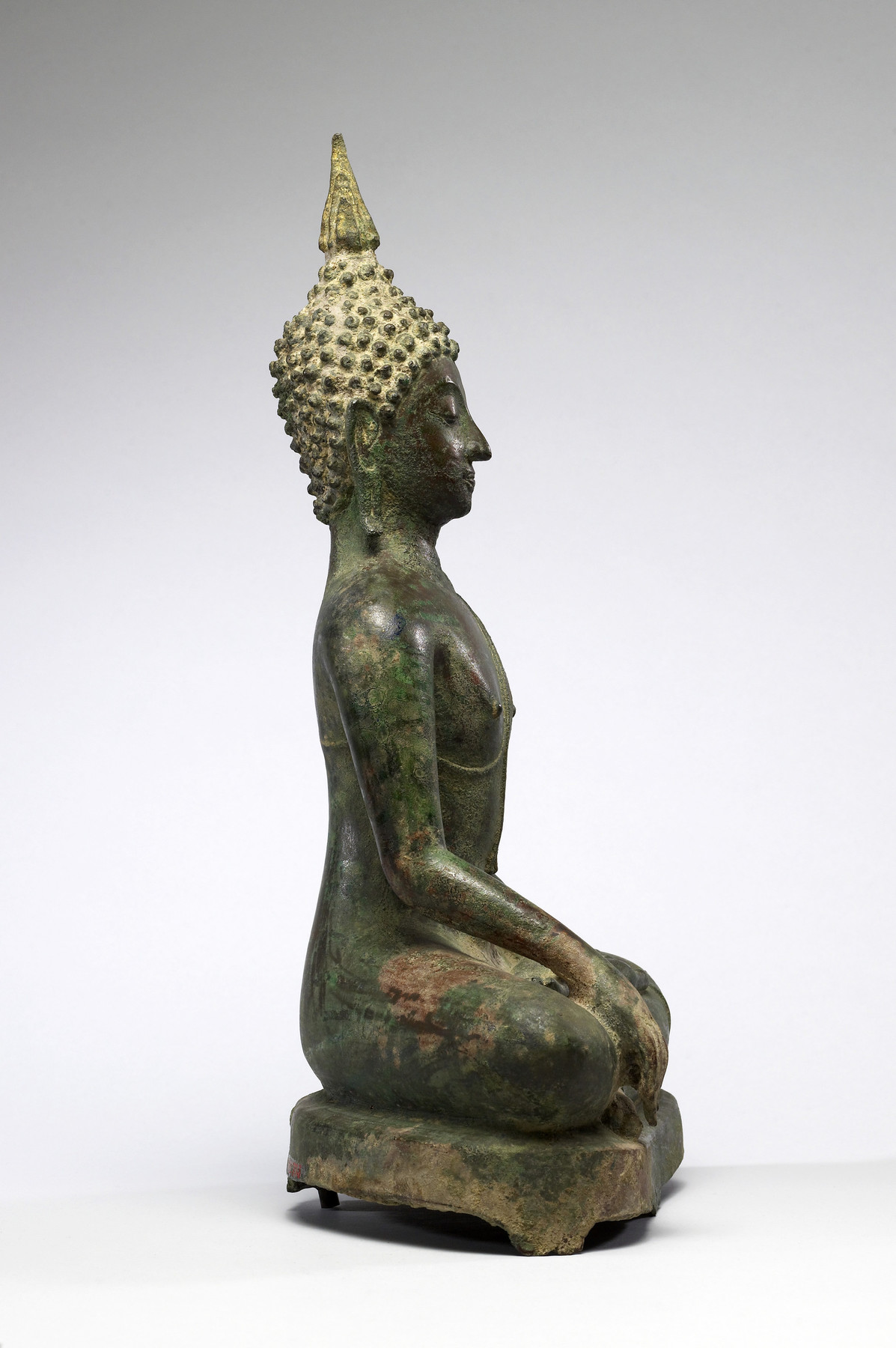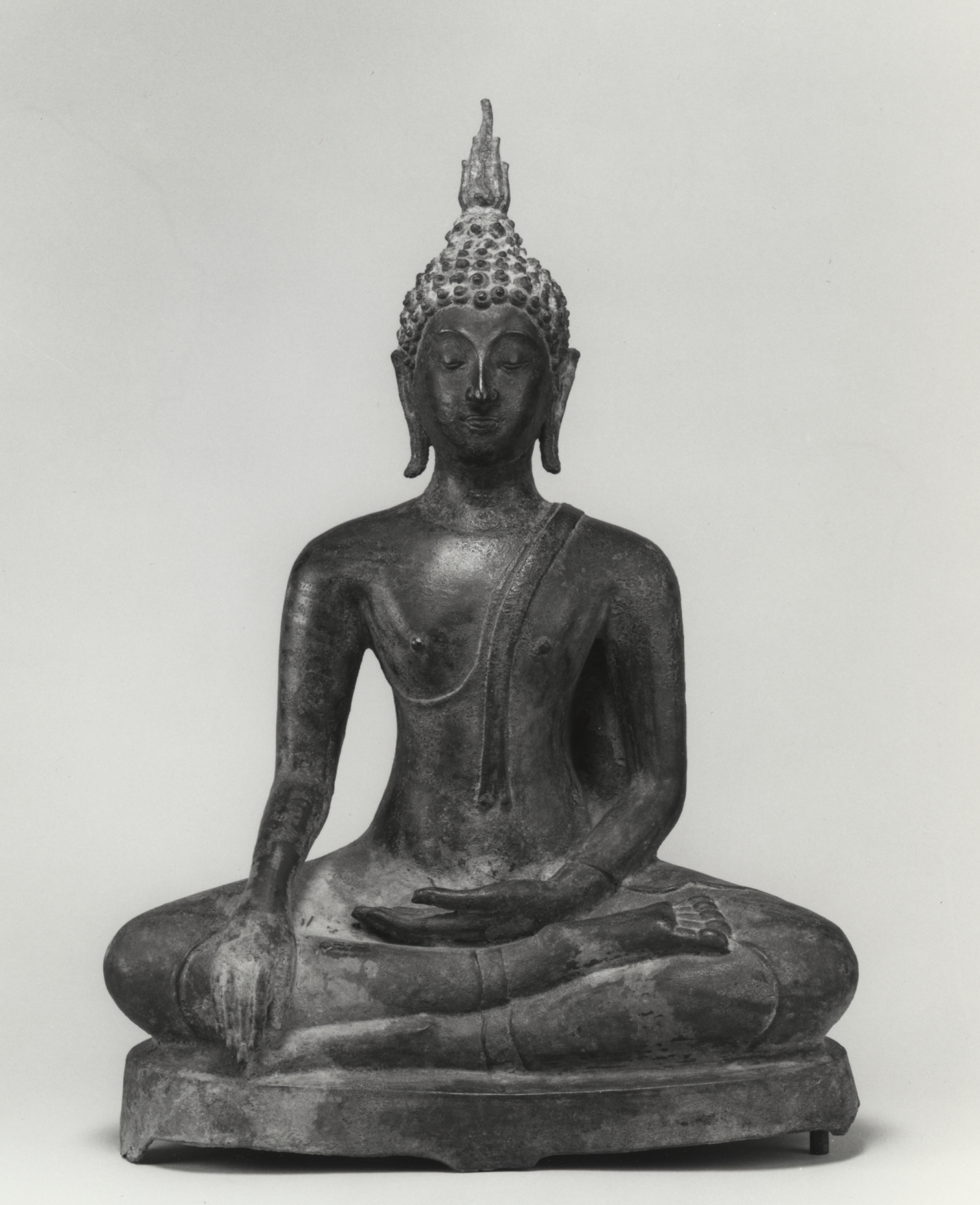Seated Buddha in "Maravijaya"
(Southeast Asia )
The Buddha is depicted at the moment of victory.
Figures of the Buddha from China, India, and Thailand appeared in many 17th-century European collections but were rarely correctly identified. A similar Thai Buddha (now in Copenhagen) was recorded in 1617 in the collection of a Dutch physician. He called it “an idol of the Egyptian sun goddess Isis.” This surprising identification reflects the tendency among scholars at the time to see the imprint of Egypt everywhere in Asia. Good information was rare. Few Europeans knew anything about Buddhism.
This small statue depicts the Buddha Shakyamuni (563–483 BCE) at the moment of enlightenment. He is seated in a meditation pose, his right hand extended to touch the earth, calling the earth goddess to witness that he is worthy of Enlightenment, having defeated the temptations of the evil Mara (the embodiment of temptation). He is dressed in a monk’s robe, signifying detachment from the world. A flame atop the head of Thai Buddhas symbolizes the brilliance of truth and wisdom.
Inscription
Provenance
Provenance (from the French provenir, 'to come from/forth') is the chronology of the ownership, custody, or location of a historical object.
Alexander B. Griswold, Monkton, 1948 or before, [presented to the Breezewood Foundation, December 1961, inv. no. 623]; Walters Art Museum, 1992, by bequest.
Exhibitions
| 1995 | The Allure of Bronze. The Walters Art Gallery, Baltimore. |
| 1995 | Unearthly Elegance: Buddhist Art from the Griswold Collection. The Walters Art Gallery, Baltimore. |
Geographies
Thailand (Place of Origin)
Measurements
H: 17 11/16 x W at Knees: 12 1/16 in. (45 x 30.6 cm)
Credit Line
Bequest of A. B. Griswold, 1992
Location in Museum
Accession Number
In libraries, galleries, museums, and archives, an accession number is a unique identifier assigned to each object in the collection.
In libraries, galleries, museums, and archives, an accession number is a unique identifier assigned to each object in the collection.
54.2773

